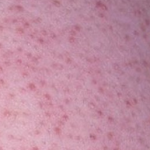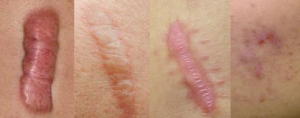Keratosis pilaris are rough, small bumps that appear on a person’s upper arms and thighs. This condition comes from a buildup of the protein known as keratin. When this protein builds up, it plugs the hair follicles. These bumps are the size of a grain of sand and in most cases are not itchy.
If you are wondering whether or not you have keratosis pilaris, it is best to see a doctor. Most of the time the doctor can tell if it is keratosis pilaris just by looking at it, without needing any further tests. It is known that keratosis pilaris can worsen during dry seasons; humidifiers can be used to add moisture to the air. Family history is the first question that you may be asked, as this is a genetic condition and can affect you at any age, but worsens during puberty.
 Keratosis pilaris is not harmful, so medical treatment is not necessary. However, scarring may occur as a result of this condition, so it is recommended to exfoliate with a mild soap and moisturize skin at least twice a day. Over-the-counter creams and lotions are what most people use to treat this condition. The effectiveness of these creams is very limited. There have been a few cases that it was treated by laser therapy, however research is still being done to find out the best treatment for this condition.
Keratosis pilaris is not harmful, so medical treatment is not necessary. However, scarring may occur as a result of this condition, so it is recommended to exfoliate with a mild soap and moisturize skin at least twice a day. Over-the-counter creams and lotions are what most people use to treat this condition. The effectiveness of these creams is very limited. There have been a few cases that it was treated by laser therapy, however research is still being done to find out the best treatment for this condition.
Medication usage on a regular basis can improve the appearance of one’s skin. Even with medical treatment, keratosis pilaris can continue for years.

